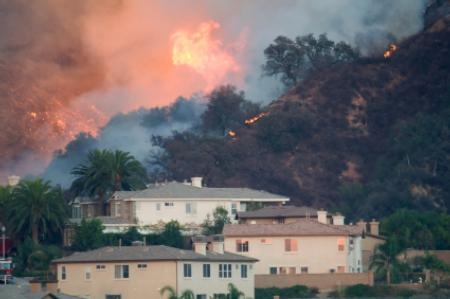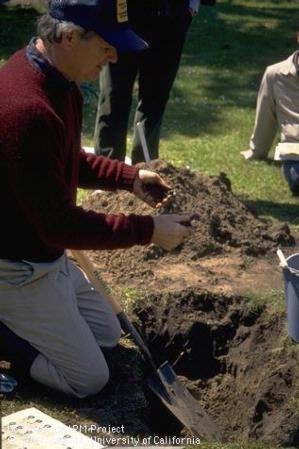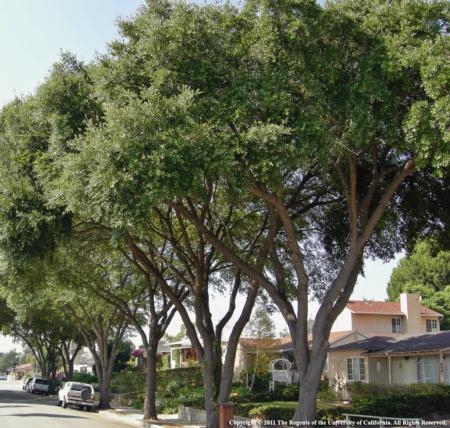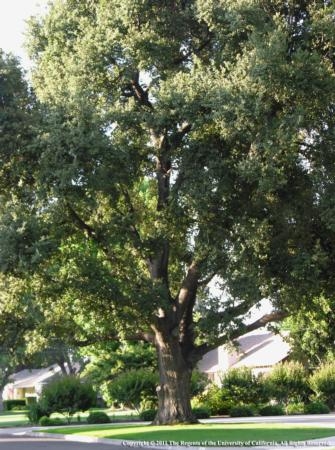- Author: Cris L. Johnson

The event was sponsored by the Santa Barbara County Flower and Nursery Growers Association and included a barbeque lunch as part of the registration fees.
The workshop was designed to assist greenhouse and nursery growers evaluate their water quality management practices (BMPs) and implement an Integrated Pest Management (IPM) Program. Information was provided to assist growers in conducting a self-audit of current water quality management practices, developing a farm water quality plan and implementing an IPM program to reduce impacts on water quality.
UC and ANR manuals and resources were used to supplement the presentations. Continuous education credits were also requested for participants.
For more information please visit the AG Water Quality Program webpage or view the workshop PowerPoint presentation here.
- Author: Chris M. Webb
UC ANR’s Spanish News Service website brings Agriculture and Natural Resource information to California residents who are fluent, and more comfortable learning, in Spanish. This is a vital service for all Californians as many of the issues and challenges we face together can only be solved by all of us working together.
This highly organized, visually appealing, and easy to navigate site provides a great deal of information on many important topics. The information can be accessed by audio, video, articles, and blogs.
Topics include:
- Invasive species
- Water quality
- Nutrition and fitness
- Child development
- Preventing obesity and overweight
- Reducing the risk of diabetes
- Natural resources
- Recovering from a natural disaster
- Integrated Pest Management (IPM)
- Preventing and recovering from wildfires
- Money management
- Gardening
- And much more
A similar site is available in English.
- Author: Chris M. Webb
Soils perform vital functions, and are the basis of the ecosystem. Healthy and productive soil is vital for our survival. It is an amazing resource and fascinating to learn about.
The Natural Resources Conservation Service (NRCS) has a great collection of informative and inspirational soil topics. All NRCS resources are free. They include:
- Soil facts – definitions, career information, soil basics, glossary, and regulations for moving soils
- Painting with soil – Jan Lang’s images of the Lewis and Clark Expedition
- 10 key messages to understanding soils
- Find out about your state’s soil
- Links for students and teachers – available for grades K-6, 7-12, and college level
- Videos and webinars
- Dig It! The Secrets of Soil
- NRCS photo gallery – natural resource and conservation related photos from across the United States
- And more
- Author: Chris M. Webb
Over the last 10 years, the Goldspotted Oak Borer (GSOB) has killed approximately 80,000 oak trees in San Diego County – including many large trees that were hundreds of years old.
To date GSOB has caused significant economic, ecological, cultural, and aesthetic losses in San Diego County. The costs of dead tree and infested wood alone is staggering.
GSOB (Agrilus Auroguttatus) is an invasive insect in California. Because it is a non-native pest there are not natural defense mechanisms to keep this insect in check. There is concern among experts that GSOB will continue to move north through California. Susceptible oak species are: coast live oak, California black oak, and canyon live oak.
It is highly suspected that GSOB entered California in firewood. GSOB larvae can live under the bark of dead oaks for over a year before exiting as adults. It is likely GSOB has spread so quickly in San Diego County via firewood movement. Because of this, it is extremely important to be mindful of where your firewood comes from. The movement of infested firewood could easily establish this destructive pest throughout the state.
To learn more about GSOB, or to get involved in preventing its spread, please see the gsob.org website.
And remember, to protect California’s Forest – Buy and Burn Local Firewood! Don’t move it around!
- Author: Jim Downer
California is a highly urbanized state with an expanding population. Planned landscapes and gardens are essential for Californians to maintain health promoting environments via urban landscapes. California’s urban landscapes are complex plant systems that provide essential functional, environmental, recreational, and psychological benefits for urban residents.
In 1995 landscapes covered 1.369 million acres in California, which is the most recent reliable data published. This planted area has undoubtedly grown with population increases since that time. In addition to creating beauty and health benefits, the ornamental plant and tree industry creates and supports many jobs and economic activity within the state.
The landscape industry is estimated to have a statewide economic activity well over $5 billion annually, with approximately 60% centered in Southern California. When indirect effects of tourism are included, the economic impact and importance of landscape horticulture nearly doubles. Examples of related employment numbers and their approximate memberships are: licensed landscape contractors (2,500), landscape architects (2,000), sod growers (4), arborists and city street tree managers (800+), urban water agencies (100+), along with urban forestry agencies and groups, irrigation managers and engineers, and municipal parks, planning and public works departments.
Landscapes are populated by two major categories of plants: turfgrasses, and woody ornamentals such as trees, shrubs and vines.
Turfgrass is the largest irrigated crop in the U.S. with an estimated land cover of 40.5 million acres or nearly 2% of the total area of the continental U.S.. The turfgrass industry in California is arguably the largest in the world with the economic impact from golf alone estimated to be more than $15 billion annually.
Turfgrass plays an important role in the landscape and in the lives of Californians. It is aesthetically pleasing and provides a safer, cushioned surface for sports and recreational activities. Turfgrass reduces surface temperature by transpirational cooling. It also lessens glare, noise, soil erosion, and dust thereby reducing air pollution and allergens. Turfgrass provides habitat for wildlife and reduces wildfire hazard. It has been demonstrated to be an effective bio-filter for applied pesticides and nutrients, and for pharmaceuticals and other xenobiotics (substances not normally found) in reclaimed water for irrigation.
Turfgrass also helps to remove carbon from the environment. Long-term soil testing data from Colorado golf courses were used to estimate soil C sequestration. Turf on the average golf course in their study sequestered as much as 450 kg (1000 pounds) C per acre per year, which is 1.5 to 3 times greater than soils under agricultural production.
Trees are perhaps the most emblematic and valuable individuals in landscapes. In part these valuable landscape elements provide shade, which in turn provides energy savings in shaded buildings. Trees absorb and store carbon and thus play a role in moderating global climate change. Trees also mitigate landscape noise, and provide an aesthetic environment where people live.
Unfortunately, the average life span of trees in urban landscapes is only about seven years. Though some studies have called for the survival statistics to be revised upward to 19-28 years, many urban trees still fail to establish or mature to serve their potential landscape functions. Research on sustaining trees in urban environments is more critical than ever as we rely on them for energy savings, carbon sequestration and the other benefits they add to urban landscapes. It is imperative that we find ways to extend the lifespan of these critical landscape elements in urban settings.
Jim Downer is a UCCE Farm Advisor in Ventura County. His specialties include pathology of landscape ornamental, Phytophtohora Root Rot, Mulches, Potting soils, Palm horticulture, and Arboriculture. Additional information about his research can be found here.







